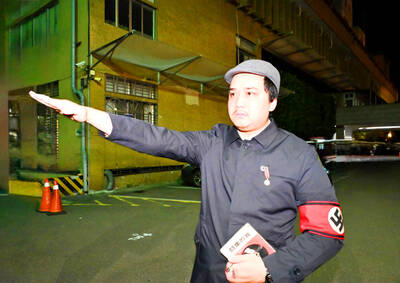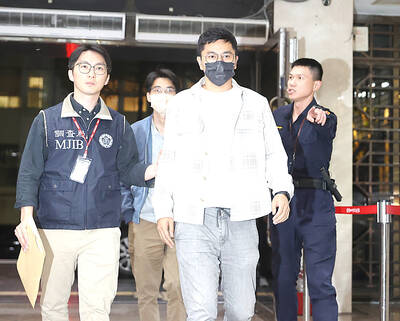The distribution Thursday of portions of the secret programmer's instructions for two versions of the Windows operating system poses vexing legal and security challenges for Microsoft.
Computer security experts said on Friday that having even relatively small parts of the blueprints for Microsoft's Windows 2000 and Windows NT operating system as easily available reference material for potential vandals and troublemakers could complicate the company's already difficult task in securing its software.
Microsoft has been intensively criticized on security issues in recent years and the company has devoted increasing resources in an effort to restore its credibility with its customers.
The posting of the information on the Internet does not present any direct threat to the hundreds of millions of users of Microsoft's software, but it may fuel the fire among those who say that Microsoft, based in Redmond, Washington, has done a poor job of protecting computer users from hackers and invasions of viruses and worms. The company may also face a debate over its contention that the secrecy of its proprietary software offers a computer security advantage over the publicly available text of open-source programs like Linux.
Microsoft's executives said on Friday that they were working with federal law enforcement officials to attempt to understand how the software instructions, known as source code, had appeared on a variety of Internet peer-to-peer file sharing systems.
"We take this seriously," said Tom Pilla, a Microsoft spokesman. "It's illegal for third parties to post or make our source code available. From that standpoint we've taken appropriate legal action to protect our intellectual property."
Word of the theft of Microsoft's source code spread rapidly on Thursday afternoon after it was first reported on a Web site, Neowin.net, and then widely discussed on the Slashdot Web site, which is widely read by the nation's programming community.
By late Thursday evening dozens of copies of different text files ranging in size from 200 megabytes to one gigabyte were being downloaded by thousands of Internet users.
Computer programmers who examined the software instructions -- the basic texts from which the Windows operating systems programs are assembled -- reported that at least some versions of the program had come from a Microsoft partner, Mainsoft Corp, a software company whose headquarters are in San Jose, California.
Several computer security experts speculated that the Microsoft operating system source code had been stolen from a Mainsoft computer via the Internet and then posted on peer-to-peer file sharing networks.
Neither Microsoft nor Mainsoft would confirm this report. Mainsoft, however, released a statement acknowledging the firm had a source code licensing agreement with Microsoft.
"Mainsoft takes Microsoft's and all our customers' security matters seriously, and we recognize the gravity of the situation," Mike Gullard, chairman of Mainsoft, said in the statement. "We will cooperate fully with Microsoft and all authorities in their investigation."
Even though Windows 2000 and Windows NT are older versions of the company's operating systems, they are still widely used by corporations around the world.
"This raises real national security concerns," said William Cook, a partner at Wildman Harrold in Chicago and a former federal computer crime prosecutor. "The fact that Microsoft's software is so widely available will have an impact across the computer security industry."
A number of computer security and legal experts said that Microsoft's biggest challenge as a result of the incident may unfold in the future as skilled programmers begin to examine the texts in search of material that may be embarrassing or damaging to Microsoft.
"There have been lots of stories about the existence of undocumented features" in Microsoft's operating system that were intended to harm competitors, said Bruce Schneier, founder and chief technical officer of Counterpace Internet Security, a computer security firm in Mountain View, California.
In 1999, Microsoft suffered a black eye when a Canadian programmer, examining a portion of its software, discovered an element inside the company's Windows operating system labeled NSAKey. At the time, Microsoft said the reference was not an indication that the company was engaged in a conspiracy with the National Security Agency, a federal intelligence operation. The label, however, undercut the company's credibility within the computer security community, where it was widely criticized at the time. In addition to the NSAKey incident, the Diebold Corp, a manufacturer of automated teller and voting machines faced criticism after the programmers' instructions for its voting machines were circulated on the Internet. Technical experts said the code revealed flaws that might make the machines vulnerable to manipulation, a charge that Diebold denied.
A number of computer experts said that Microsoft had no choice but to rush to court to try to limit the spread of the software instructions through temporary restraining orders.
"The horse is out of the barn," said Jim Brelsford, a partner at the law firm Jones Day in Menlo Park, California. "But you have to do this to protect your trade secrets."

Seventy percent of middle and elementary schools now conduct English classes entirely in English, the Ministry of Education said, as it encourages schools nationwide to adopt this practice Minister of Education (MOE) Cheng Ying-yao (鄭英耀) is scheduled to present a report on the government’s bilingual education policy to the Legislative Yuan’s Education and Culture Committee today. The report would outline strategies aimed at expanding access to education, reducing regional disparities and improving talent cultivation. Implementation of bilingual education policies has varied across local governments, occasionally drawing public criticism. For example, some schools have required teachers of non-English subjects to pass English proficiency

‘FORM OF PROTEST’: The German Institute Taipei said it was ‘shocked’ to see Nazi symbolism used in connection with political aims as it condemned the incident Sung Chien-liang (宋建樑), who led efforts to recall Democratic Progressive Party (DPP) Legislator Lee Kun-cheng (李坤城), was released on bail of NT$80,000 yesterday amid an outcry over a Nazi armband he wore to questioning the night before. Sung arrived at the New Taipei City District Prosecutors’ Office for questioning in a recall petition forgery case on Tuesday night wearing a red armband bearing a swastika, carrying a copy of Adolf Hitler’s Mein Kampf and giving a Nazi salute. Sung left the building at 1:15am without the armband and apparently covering the book with a coat. This is a serious international scandal and Chinese

TRADE: The premier pledged safeguards on ‘Made in Taiwan’ labeling, anti-dumping measures and stricter export controls to strengthen its position in trade talks Products labeled “made in Taiwan” must be genuinely made in Taiwan, Premier Cho Jung-tai (卓榮泰) said yesterday, vowing to enforce strict safeguards against “origin laundering” and initiate anti-dumping investigations to prevent China dumping its products in Taiwan. Cho made the remarks in a discussion session with representatives from industries in Kaohsiung. In response to the US government’s recent announcement of “reciprocal” tariffs on its trading partners, President William Lai (賴清德) and Cho last week began a series of consultations with industry leaders nationwide to gather feedback and address concerns. Taiwanese and US officials held a videoconference on Friday evening to discuss the

PERSONAL DATA: The implicated KMT members allegedly compiled their petitions by copying names from party lists without the consent of the people concerned Judicial authorities searched six locations yesterday and questioned six people, including one elderly Chinese Nationalist Party (KMT) member and five KMT Youth League associates, about alleged signature forgery and fraud relating to their recall efforts against two Democratic Progressive Party (DPP) legislators. After launching a probe into alleged signature forgery and related fraud in the KMT’s recall effort, prosecutors received a number of complaints, including about one petition that had 1,748 signatures of voters whose family members said they had already passed away, and also voters who said they did not approve the use of their name, Taipei Deputy Chief Prosecutor